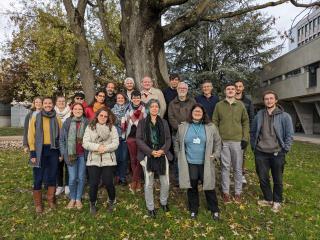Bioinformatics, Phylogeny and Evolutionary Genomics Group
Members
Maîtresse de conférences
UCBL
Tel: 04 72 44 84 87

Professeure des universités
UCBL
Tel: 33 04 26 23 44 76
Doctorante
UCBL
Enseignant-chercheur CPJ
UCBL
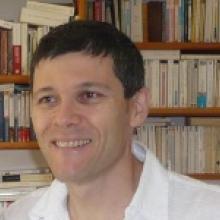
Directeur de recherche
CNRS
Tel: 33 04 72 44 62 97
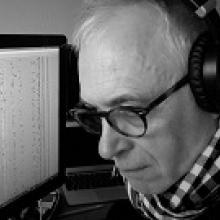
Professeur d'université émérite
UCBL
Tel: 04 72 44 85 60
Ingénieur d'études CDD
CNRS
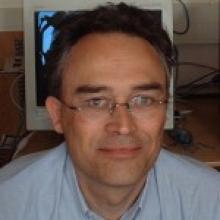
Directeur de recherche
CNRS
Tel: 33 04 72 43 11 67
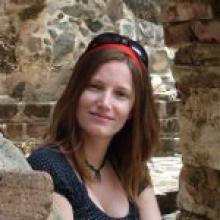
Maîtresse de conférences
UCBL
Tel: 33 04 72 43 29 18
Doctorante
UCBL
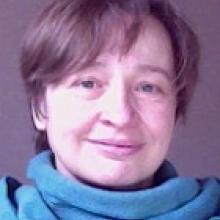
Chargée de recherche
CNRS
Tel: 33 04 72 44 85 60
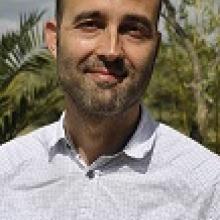
Directeur de recherche
CNRS
Tel: 04 72 44 84 87

Chargée de recherche
CNRS
Tel: 04 72 43 13 44

Directeur de recherche
CNRS

Maître de conférences
UCBL
Tel: 04 72 43 35 83
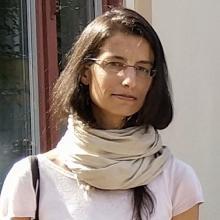
Chargée de recherche
CNRS
Tel: 04 72 44 81 42
Doctorant
CNRS

Directeur de recherche
CNRS
Tel: 33 04 72 44 62 96

Chargée de recherche
CNRS
Tel: 04 72 43 26 28
Doctorant
UCBL
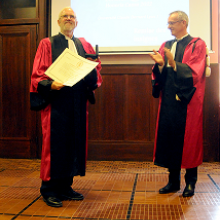
Chercheur invité
UCBL
Our group focuses on two main axes: phylogenomics (i.e. the inference of evolutionary history based on genomics data) and evolutionary genomics (understanding the molecular and population processes that drive genome evolution). We see genomes both as a subject of research (how do genomes evolve, why are they structured the way they are?), but also as a main source of empirical knowledge about the macroevolutionary patterns (what do they tell us about the history of life on Earth?), or about the phenotypes and life-history strategies of organisms. Our works heavily rely on methodological developments (bioinformatics, modeling and statistical inference).
Evolution of genome architecture and expression
Genomes are the result of a long-term evolutionary process, shaped by multiple evolutionary forces. Some genomic features are adaptive (i.e. are beneficial for the fitness of organisms), others result from non-adaptive processes (random drift and biased gene conversion - BGC) or are caused by conflicts between multiple levels of selection (e.g. meiotic drive or the spread of selfish genetic elements). We explore different aspects of genome architecture (base composition landscapes, genome structure and size, impact of transposable elements, …) or functioning (gene expression, lncRNAs, epigenetic landscapes, …), and try to disentangle the relative contribution of adaptive and non-adaptive processes to their evolution. For this purpose, we consider both the molecular mechanisms (mutation, repair, recombination) and the population processes (selection, drift, BGC, …) that shape genetic variation.
Phylogenomics
We are interested in reconstructing the history of life on Earth. This research unfolds along several axes. First, we develop phylogenomic databases of aligned genetic sequences (e.g. BIBI, RiboDB or HOGENOM). Second, we conduct methodological research on how to accurately reconstruct deep phylogenies, infer divergence times, reconstruct ancestral genetic sequences, gene repertoires and life-history traits. This methodological work is translated into publicly available software programs (e.g. SeaView, PhyloBayes, Coevol). Finally, we apply these approaches to several important problems, among which: reconstructing the phylogeny of animals, of archaea, or the global tree of life; using phylogenies and ancestral gene repertoires to investigate the evolution of complex systems and the emergence of molecular and cellular functions in the three domains of life; reconstructing ancestral genetic sequences, a research activity that has industrial and biotechnological applications.
Teaching and outreach
We teach at University Lyon 1 (Master Bioinfo@Lyon), INSA, ENS Lyon, we organize bioinformatics internships. We regularly give conferences on evolution (tree of life, human evolution, genetic diversity, …).
Prospective students and postdocs are invited to apply, as we often welcome visitors for internships or research projects.
Keywords: Molecular evolution and Population Genomics; Phylogenomics; Computational Genomics; Comparative genomics; Bioinformatics; Statistical inference.
Publications
Display of 601 to 630 publications on 1110 in total
SeaView Version 4: a Multiplatform Graphical User Interface for Sequence Alignment and Phylogenetic Tree Building
Molecular Biology and Evolution . 27 : 221-224
Journal article
see the publicationThe origin of eukaryotes and their relationship with the Archaea: are we at a phylogenomic impasse?
Nature Reviews Microbiology . 8 ( 10 ) : 743-753
DOI: 10.1038/nrmicro2426
Journal article
see the publicationDistinct gene set in two different lineages of ammoniaoxidizing archaea supports the phylum Thaumarchaeota
Trends Microbiol . 18(8) : 331-40
Journal article
see the publicationNitrosopumilus maritimus genome reveals unique mechanisms for nitrification and autotrophy in globally distributed marine crenarchaea
Proceedings of the National Academy of Sciences of the United States of America . 107 ( 19 ) : 8818-23
Journal article
see the publicationStructure, function, and evolution of the Thiomonas spp. genome.
PLoS Genetics . 6 ( 2 ) : e1000859
Journal article
see the publicationRECONSTRUCTING ORIGINS OF LOSS OF SELF-INCOMPATIBILITY AND SELFING IN NORTH AMERICAN ARABIDOPSIS LYRATA: A POPULATION GENETIC CONTEXT
Evolution - International Journal of Organic Evolution . 64 ( 12 ) : 3495 - 3510
Journal article
see the publicationReconstructing origins of loss of self-incompatibility and selfing in North American Arabidopsis lyrata: a population genetic context
Evolution - International Journal of Organic Evolution . 64 : 3495-3510
Journal article
see the publicationA Phylogenetic Model for Investigating Correlated Evolution of Substitution Rates and Continuous Phenotypic Characters
Molecular Biology and Evolution . 28 ( 1 ) : 729 - 744
Journal article
see the publicationA Dirichlet Process Covarion Mixture Model and Its Assessments Using Posterior Predictive Discrepancy Tests
Molecular Biology and Evolution . 27 ( 2 ) : 371-384
Journal article
see the publicationProposals for classification methods dedicated to biological data
International Journal of Biomedical Engineering and Technology (IJBET) . 3 ( 1/2 ) : 4-21
Journal article
see the publicationSpecialization of a Drosophila capping protein essential for the protection of sperm telomeres.
Current Biology . 20 ( 23 ) : 2090-9
Journal article
see the publicationCan Intra-Y Gene Conversion Oppose the Degeneration of the Human Y Chromosome? A Simulation Study
Genome Biology and Evolution . 2 : 347-357
Journal article
see the publicationStructure and evolution of Apetala3 a sex-linked gene in Silene latifolia
BMC Plant Biology . 10 : 1-10
Journal article
see the publicationChromosomal Redistribution of Male-Biased Genes in Mammalian Evolution with Two Bursts of Gene Gain on the X Chromosome
PLoS Biology . 8 ( 10 ) : 1-13
Journal article
see the publicationMeiosis: A PRDM9 Guide to the Hotspots of Recombination
Current Biology . 20 ( 6 ) : R271-R274
Journal article
see the publicationSpecialization of a Drosophila Capping Protein Essential for the Protection of Sperm Telomeres
Current Biology . 20 : 1-10
Journal article
see the publicationThe relationship among gene expression, the evolution of gene dosage, and the rate of protein evolution
PLoS Genetics . 6 ( 5 ) : e1000944
Journal article
see the publicationEvolution of the ribosome: testing eukaryotic origins
Archaea and the tree of life .
Conference paper
see the publicationGenetic Admixture History of Eastern Indonesia as Revealed by Y-Chromosome and Mitochondrial DNA Analysis
Molecular Biology and Evolution . 26 ( 8 ) : 1865-1877
Journal article
see the publicationGenetic diversity and the emergence of ethnic groups in Central Asia
BMC Genetics . 10 ( 1 ) : 49
Journal article
see the publicationMutation Patterns in the Human Genome:More Variable Than Expected
PLoS Biology . 7(2) e1000028 : 803-806
Journal article
see the publicationMonoallelic expression and tissue specificity are associated with high crossover rates
Trends in Genetics . 25(12) : 519-522
Journal article
see the publicationGC-biased gene conversion promotes the fixation of deleterious amino acid changes in primates
Trends in Genetics . 25(1) : 1-5
Journal article
see the publicationA Mixture Model and a Hidden Markov Model to Simultaneously Detect Recombination Breakpoints and Reconstruct Phylogenies
Evolutionary Bioinformatics . 5 : 67-79
DOI: 10.4137/EBO.S2242
Journal article
see the publicationPhylogeny of prokaryotes: does it exist and why should we care?
Research in Microbiology . 160 : 513-21
Journal article
see the publicationHappy together: genomic insights into the unique Nanoarchaeum/Ignicoccus association.
Journal of Biology . 8 ( 1 ) : 7
DOI: 10.1186/jbiol110
Journal article
see the publicationGenomic environment influences the dynamics of the tirant LTR retrotransposon in Drosophila
FASEB Journal . 23 : 54-62
Journal article
see the publicationInfra- and Transspecific Clues to Understanding the Dynamics of Transposable Elements
genome dyn stab . -- : 115-123
Journal article
see the publicationIdentification of expressed transposable element insertions in the sequenced genome of Drosophila melanogaster
Gene . 439 : 55-62
Journal article
see the publicationIdentifying repeats and transposable elements in sequenced genomes: how to find your way through the dense forest of programs
Heredity . -- : 1-14
Journal article
see the publication
